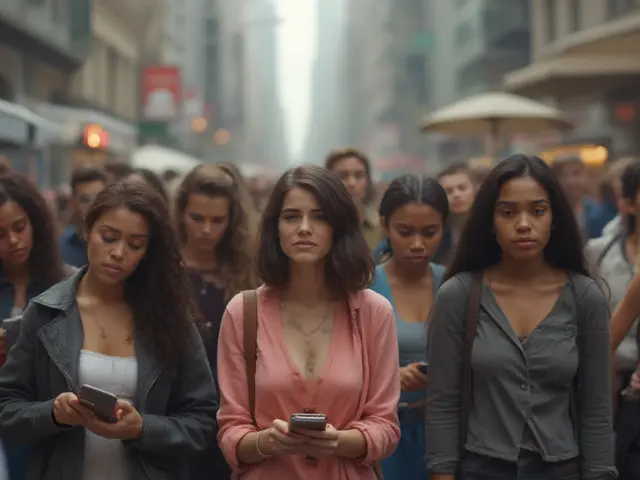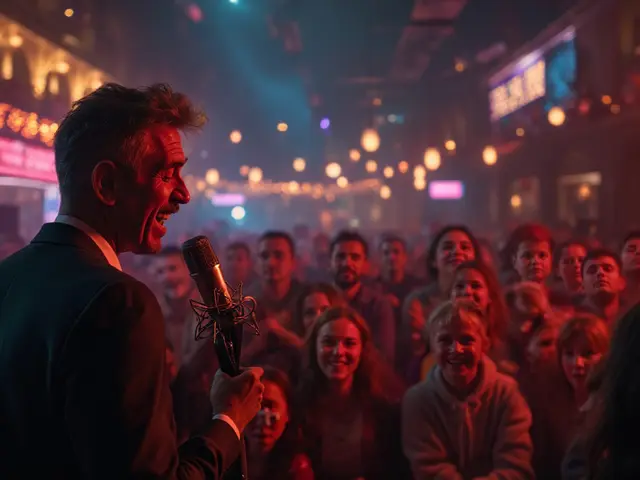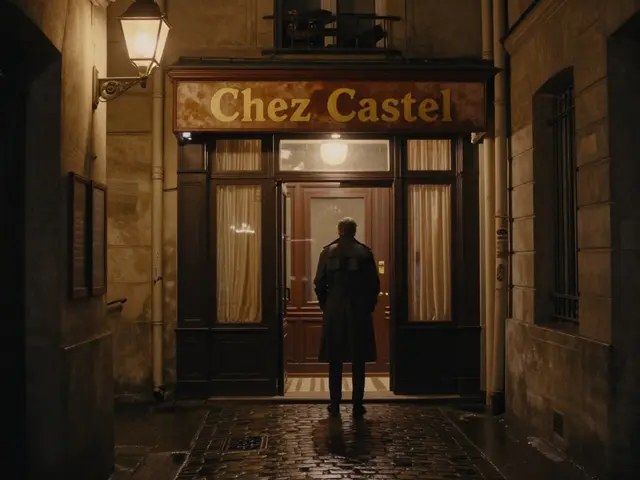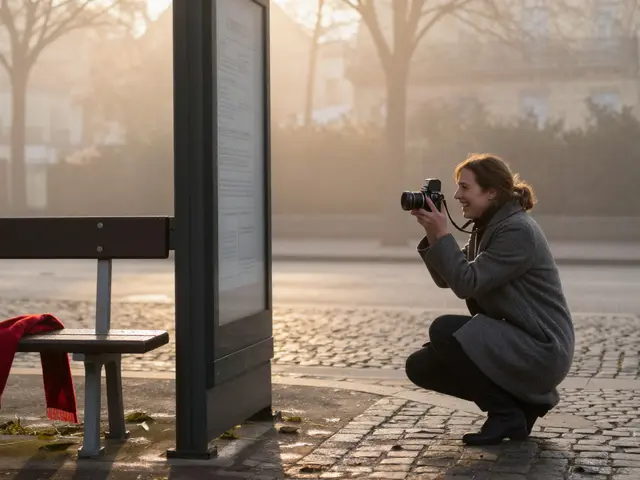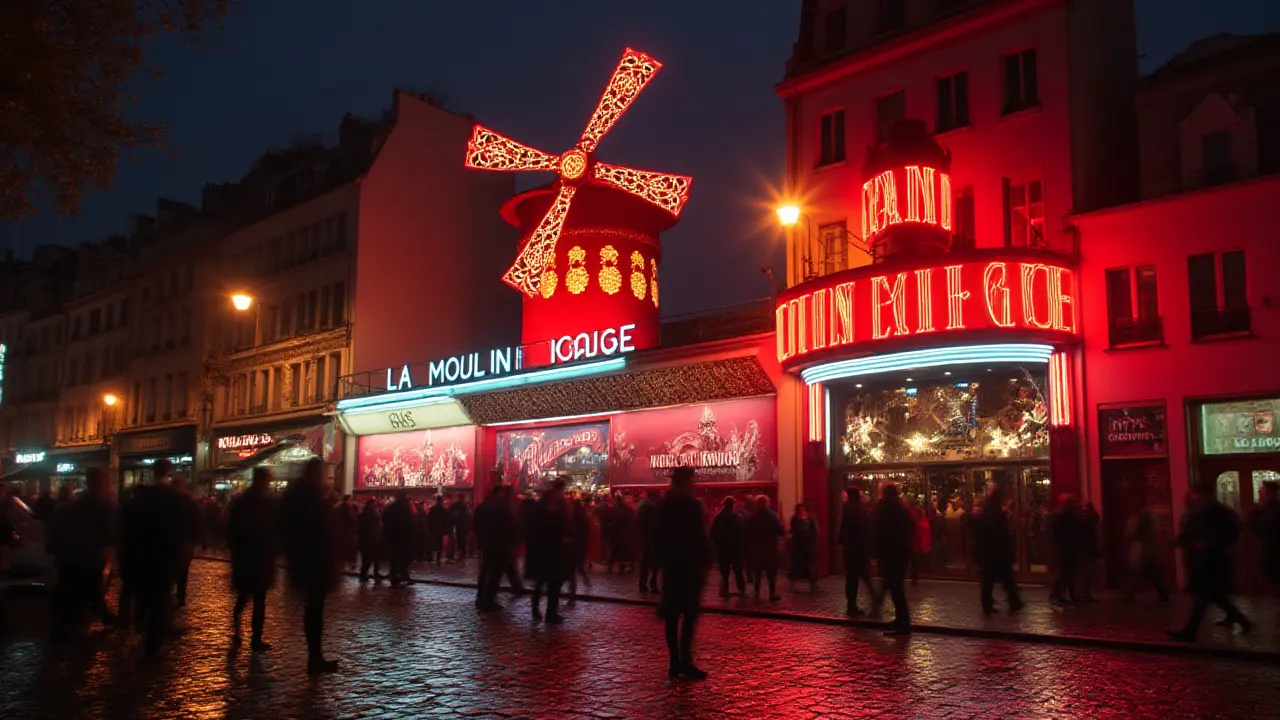
The minute you mention La Machine du Moulin Rouge in Paris, reactions range from knowing smiles to the raised brows of curiosity. Nestled between the glow of Montmartre’s Sacré-Cœur and the late-night hum of Boulevard de Clichy, this place isn’t just another Paris venue—it’s an institution, the sort of spot that’s always part of at least one outlandish story you’ve heard at a smoky brasserie. Live here long enough, and it’s as familiar as the Métro map on your phone, yet still taps something wild, unexpected, and defiantly Parisian every single night.
From Historic Cabaret to Electro Haven: A Parisian Evolution
Tracing La Machine du Moulin Rouge’s journey takes you right back to the thick of Parisian nightlife lore. The Moulin Rouge itself was already world-famous by the late 19th century, all crimson windmill and indulgent cancan, but its annex—what is now La Machine—started serving as a ballroom, morphing with every beat of Paris’s ever-evolving cultural heart. In the disco-fueled 1970s, its infamous parties pulled in much of the city’s creative crowd. Jump to the 1990s and 2000s: David Guetta threw early raves here, and Parisians started using “La Machine” in the same breath as Rex Club or Bataclan.
Because let’s be honest, Parisians don’t just want another club. They want something with layers. La Machine doesn’t just trade on nostalgia; it constantly reinvents itself. There are three different spaces inside: Le Central (the main club), La Chaufferie (the underground room), and Le Bar à Bulles (the rooftop terrace). You can float between a pounding techno set, a sweaty indie rock gig, and a quiet cocktail under fairy lights—all in one night. It’s this blend that keeps locals coming, regardless of age or musical taste.
The calendar is always stacked: cutting-edge DJ sets, retro nights (if you like synthpop and 80s French disco, you’re sorted), queer-friendly cabaret acts, and live showcases that have launched plenty of careers. One October, my friend dragged me into a surprise gig by Christine and the Queens announced only that morning on Instagram; a week later, the same stage throbbed with afrobeat and reggaeton. The turnover is that fast, and the programming doesn’t shy away from mixing underground names with big-label stars.
The neighborhood itself has changed—Pigalle’s gentrification is a heated topic at every café table from Place Blanche to the edge of SoPi (South Pigalle)—but La Machine stands as proof that some Paris nightlife spots adapt, not fade. If anything, the place has doubled down on being inclusive; it’s actively involved with Nuit Blanche, Fête de la Musique, and LGBTIQ+ performances, and even runs daytime cultural markets and record fairs. That duality—the weights of history and constant reinvention—makes it stand apart from cookie-cutter Ibiza-style clubs or velvet-rope elitism.
Inside Secrets: What Parisians Know (and Visitors Usually Miss)
You can always spot who’s a local and who’s not at La Machine. Parisians know exactly when to arrive: 1 a.m. on a Friday if you want to avoid the pre-midnight tourist crush and slide straight into the most electric hours. In-the-know folks skip the main queue by heading to the side entrance for La Chaufferie, especially on nights when a lesser-publicized electro collective is playing downstairs. Another pro tip? The rooftop Bar à Bulles opens even when the club’s main doors are shut, meaning you can catch early evening cocktails and a view over Montmartre before plunging into the chaos below.
The best part of La Machine is always the mix of people. Unlike some Paris venues that draw a uniform crowd, you’ll run into everyone: thirty-something locals, international students, drag queens, artists on their night off, the occasional celebrity hiding in plain sight, and maybe a handful of diehard househeads who remember the space from its Le Loco days.
The wardrobe? Parisians skip sequins and skyscraper heels; think black jeans, statement tees, or vintage Saint James stripes—anything that lets you dance till 4 a.m. without worrying about wine stains or cigarette burns. A lot of regulars bring a small tote, since cloakroom space fills up during larger concerts. It’s worth tracking events via social channels and buying tickets in advance, particularly for themed nights like Paris is Burning (the voguing extravaganza) or parties hosted in tandem with local collectives like La Chinerie or Château Perché. Parisians know: spontaneity is sexy, but queuing for sold-out club nights in a winter drizzle is not.
- Transport: Take Metro line 2 to Blanche—cabs and Ubers spike after 3 a.m.
- Food: Nearby Le Sans Souci or Les Apaches do late-night snacks; the street food window inside La Machine isn’t just a rumor, it’s a lifeline after three vodka lemonades.
- Payment: Go card or Apple Pay; cash isn’t king anymore at the bar.
- Sound: The acoustics in Le Central are legendary; audiophiles swear by the Funktion-One set-up.
- Vibe: Sundays can surprise you—occasional drag brunches or vinyl markets pop up, especially between September and April.
For Parisians who crave both dancing and downtime, La Machine gives options. I’ve spent afternoons with Laurent on the rooftop, clinking glasses of Chablis and watching dusk settle over Pigalle Flats. Not every night needs to be a marathon rave; sometimes it’s just about enjoying really good conversation—accompanied by the distant thump of someone else’s perfect night out.
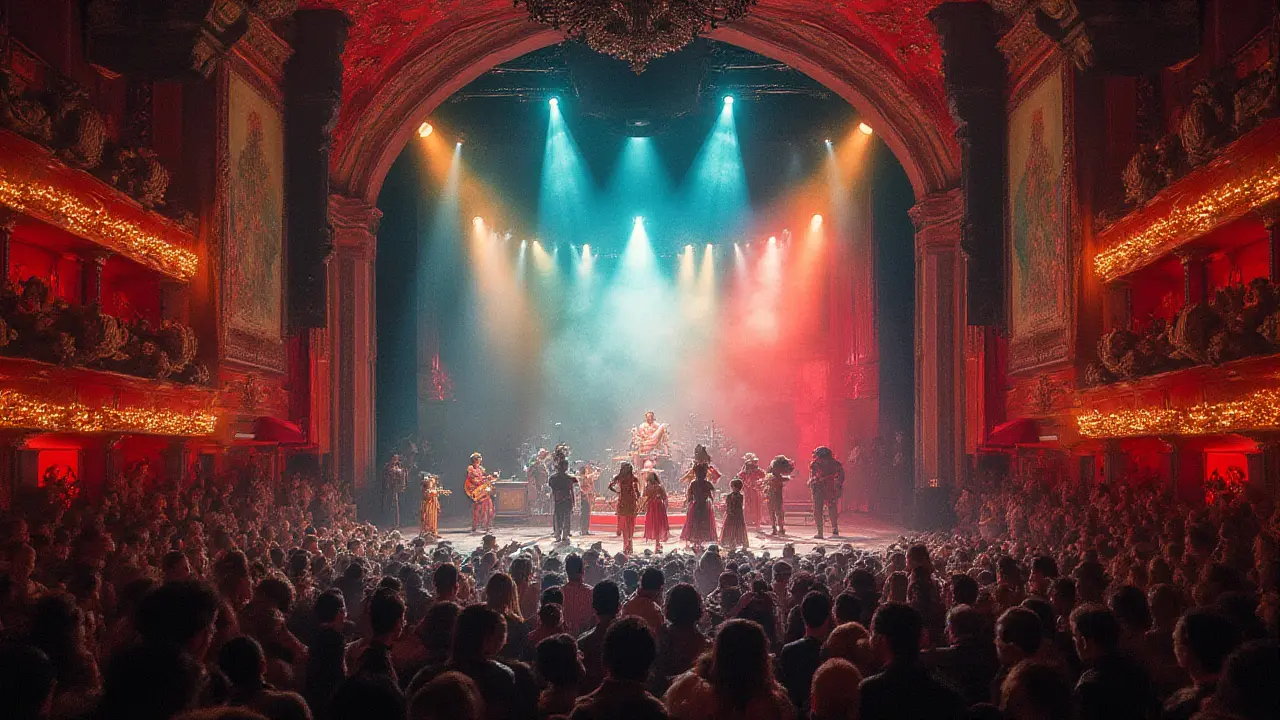
The Soundtrack of a City: Concerts, Parties, and Legendary Performances
Paris doesn’t lack concert halls—from L’Olympia to Le Trianon—but La Machine isn’t just about size or acoustics; it’s about energy, intimacy, and musical discovery. It isn’t rare for a DJ to blast through the main floor until sunrise and then slip downstairs for an intimate back-to-back set with a fellow selector known only to the city’s nightlife obsessives. This genre-mashing approach is why you’ll hear a different style each weekend: techno, hip-hop, indie, world music, and more. In 2024 alone, La Machine hosted over 150 events, from queer cabaret balls to the rowdy Nuit Blanche street afterparties.
Audiences here don’t stand on ceremony. If a headliner is running late, impromptu local acts spark up the crowd. If a sound system malfunctions, people pull out harmonicas or start a spontaneous crowd chant—no diva drama, just that classic Parisian improvisational spirit. The programming team isn’t afraid to feature up-and-coming collectives on the same bill as cult favorites like Pedro Winter (Busy P) or Clara 3000. During the 2024 Olympic Games, the place was a makeshift hub for midnight concerts, world music jams, and Brazilian samba dancers in full carnival gear.
Some of my most intense musical memories are from this venue: tribal house in the sweaty heat of August, trap battles that had Paris Fashion Week attendees leaving the VIP at Le Carmen to join in, a surprise indie set by Phoenix that nearly cracked the tiles upstairs. The energy simply can’t be faked. A lot of venues ride on reputation alone, but La Machine constantly raises the bar—not by being exclusive, but by reading the city’s mood week by week.
The same goes for visual arts. La Machine often partners with art schools (like École Duperré) and collectives to install pop-up exhibitions, street murals, and stunning video projections. If you’re looking for new creative voices, pick a random Friday and follow the poster trail up the stairs. People often ask why Paris nightlife has such a distinctive pulse. For me, it starts in places like this—where art, music, and attitude mix in unpredictable, unforgettable ways.
What Makes the Crowd Tick: Parisian Social Rituals and Surprises
Paris is famously tough to crack, but La Machine is one of those places where regulars welcome fresh faces. It’s not uncommon to start the night in a tight friend group and end up swapping stories with a stranger from Bordeaux, singing along in Franglais, or joined by an after-hours crowd straight from the set of a Canal+ shoot. Parisians love their rituals: rounds of Ricard before hitting the dancefloor, texting their WhatsApp groups for secret afterparties, or recovering in the chillout room with a café crème and a pain au chocolat just before sunrise.
This isn’t just a dance spot. It’s a cross-section of the city’s styles and scenes. Skate kids from République and Pigalle mix with Latinx dancers from Belleville, local writers looking for after-dark inspiration, and tourists drawn in by word of mouth rather than glossy travel guides. You’ll overhear snippets of a dozen languages in a single night, but most conversations default to slang-heavy French (a quick “On va où après?”—where’s next?—echoes around every corner just past 5 a.m.).
There’s an unspoken code: don’t crowd the dancefloor selfie-style, don’t be shy to compliment someone’s vintage bomber, and always, always buy your round at the bar. Parisians tend to keep things low-key even when letting loose—easier to slip off home by Velib’ or catch a 6 a.m. croissant at Le Mascotte on the way out.
One thing I adore is the way La Machine links up with city-wide events. During Fête de la Musique, you see local musicians wander in after playing the streets; on Pride weekend, the afterparties stretch until lunch. The crowd is never static—sometimes you’ll find half the room deep into a poetry slam before the tempo kicks up with a sudden reggaeton hit. It’s classic Paris: traditions and unpredictability rolled into one long, ever-changing night.
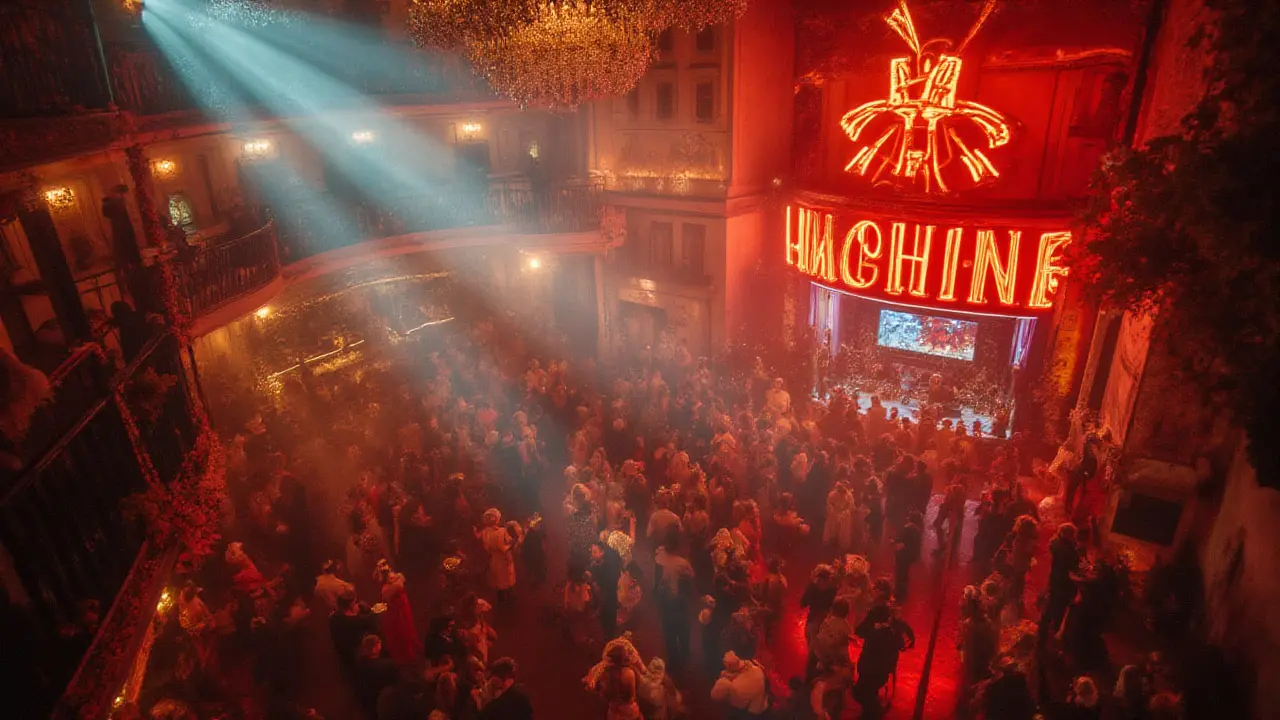
How to Make the Most of It: Insider Advice and Survival Tips
Ready for the experience? Here’s what I’ve learned after a decade of Paris nights. If you want a seamless entrance, arrive after 1 a.m., with tickets bought online via shotgun.live or Dice. Coat check will be packed during big concerts, so travel light or be ready to chat while queuing—Parisians often use this moment to air the latest city gossip. Don’t come hungry; snack kiosks are handy but not gourmet. Best pre-party food bets? Grab a slice from Pink Flamingo nearby or a burger at Le Ruisseau, then cross Boulevard de Clichy to soak in the street’s constant theatre of people-watching.
Transport home matters a lot—Metro lines stop after 2 a.m. on weekends, so either organize a night bus, cycle with a friend, or expect ride-share surge pricing. If there’s a strike (it happens), many opt for an after-hours stroll up Montmartre to watch the sunrise before heading home. If you want downtime, catch the occasional open-air events on the Bar à Bulles rooftop, which turn into intimate Q&As, silent discos, or wine tastings hosted by local sommeliers.
For those with a weaker tolerance for Parisian cigarette smoke and ever-present perfume clouds, the ventilation in Le Chaufferie can be intense, so hang near the edges if you need to breathe. The staff understand Parisian patience—be polite but firm if the service is slow; a smile and a bit of French always helps. Most importantly, never judge a Parisian for wearing aviator sunglasses at 4 a.m. in December—you don’t know where their night began, or where it might end.
| Aspect | Insider Tip |
|---|---|
| Best arrival time | After 1 a.m. for main room; rooftop earlier for drinks |
| Ticketing | Pre-book on Dice or shotgun.live |
| Afterparty | Check WhatsApp groups or chat up regulars |
| Pre-game food | Snack at Pink Flamingo, Le Ruisseau, or late-night boulangeries |
| Transport | Metro till 2 a.m., then buses or ride-shares |
| Dress code | Anything goes, but opt for stylish comfort |
The best nights out aren’t always the ones you’ve planned. In Paris, places like La Machine du Moulin Rouge prove that no matter how much the city changes, there’s always a dance floor waiting for your story. I can’t say how many times my friends and I swore we’d “just have a quiet night,” only to stumble out at dawn blinking into the Parisian light, half-dreaming and already plotting our next visit.


